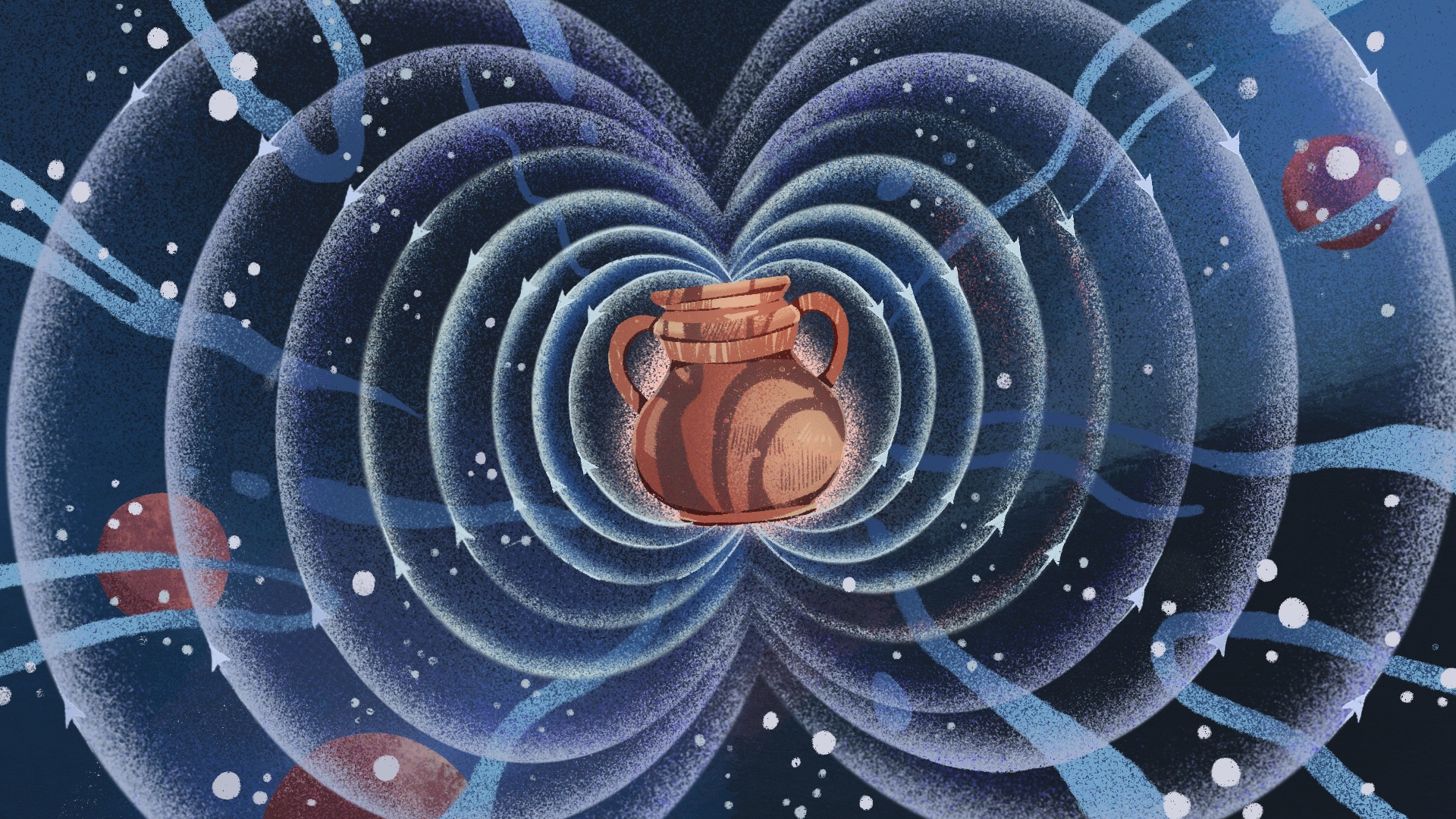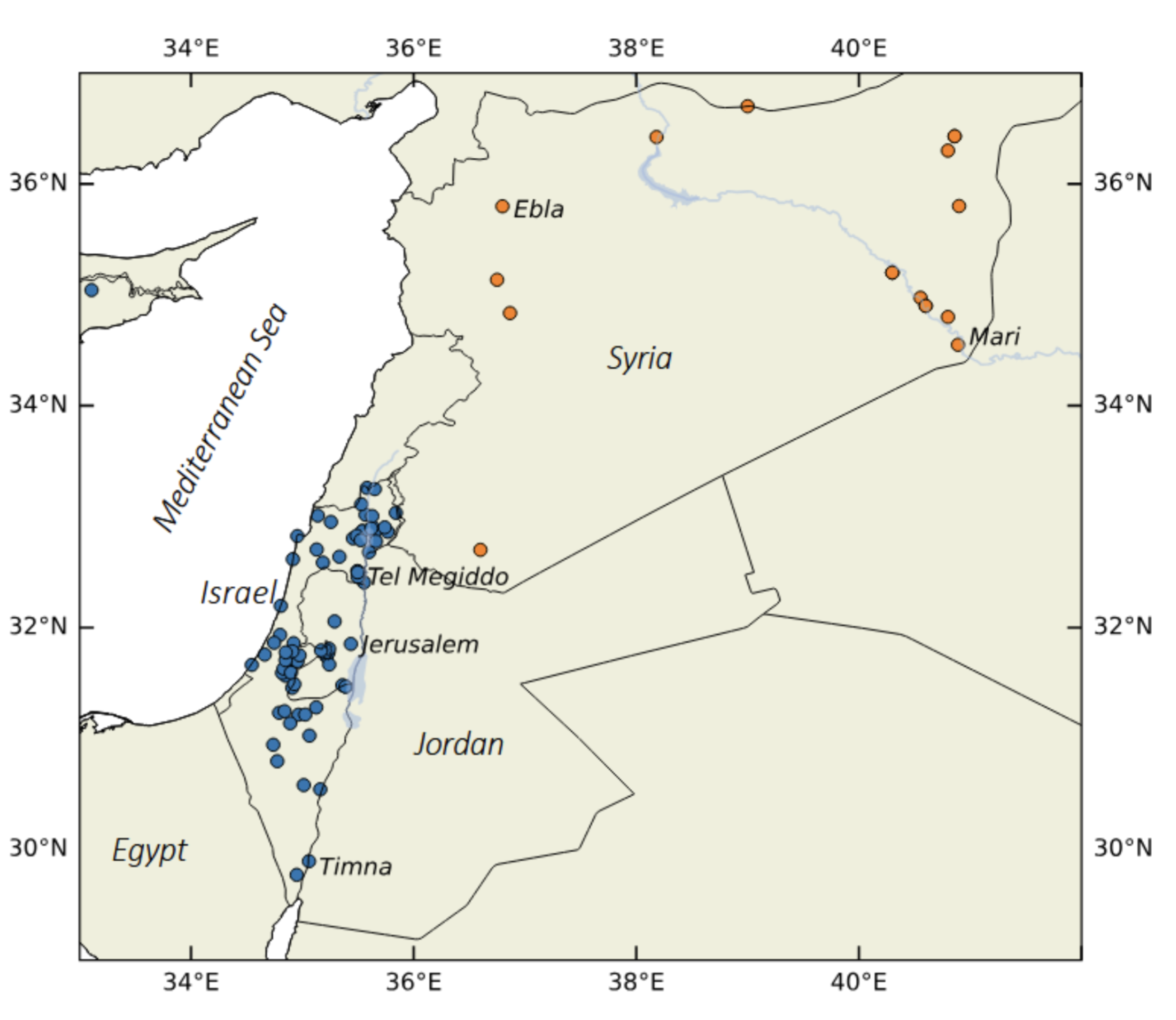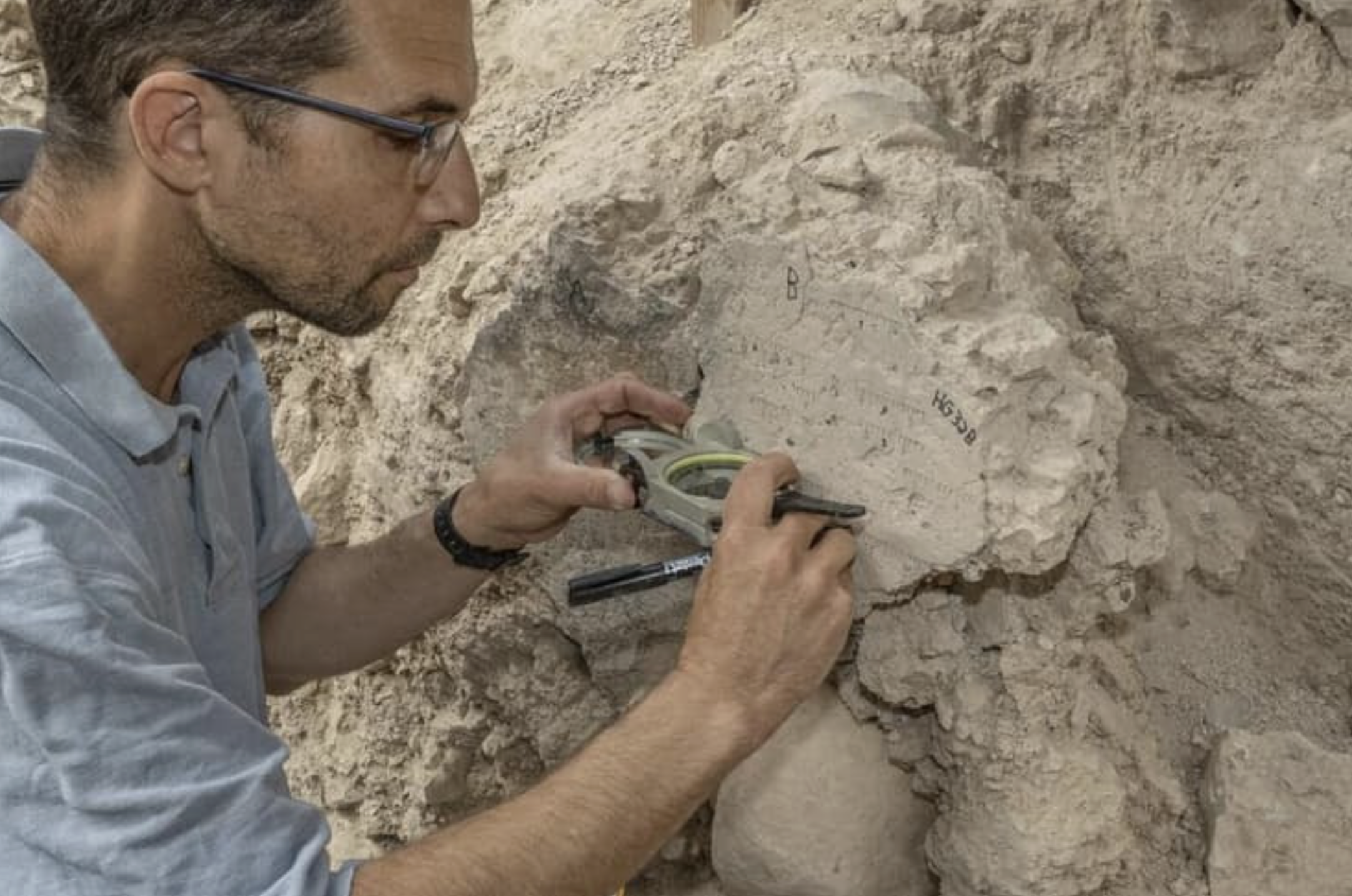
Earth's magnetic field is weakening — magnetic crystals from lost civilizations could hold the key to understanding why
Artifacts from the Iron Age have revealed an intense historical magnetic anomaly in the Middle East. Could using a similar approach elsewhere help us unravel the mysteries of Earth's magnetic field?

In 2008, Erez Ben-Yosef unearthed a piece of Iron Age "trash" and inadvertently revealed the strongest magnetic-field anomaly ever found.
Ben-Yosef, an archaeologist at Tel Aviv University, had been working in southern Jordan with Ron Shaar, who was analyzing archaeological materials around the Levant. Shaar, a geologist at The Hebrew University of Jerusalem, was building a record of the area's magnetic field.
The hunk of copper slag — a waste byproduct of forging metals — they found recorded an intense spike in Earth's magnetic field around 3,000 years ago.
When Ben-Yosef's team first described their discovery, many geophysicists were skeptical because the magnitude of the spike was unprecedented in geologic history. "There was no model that could explain such a spike," Ben-Yosef told Live Science.
Related: Major 'magnetic anomaly' discovered deep below New Zealand's Lake Rotorua

So Shaar worked hard to give them more evidence. After they had analyzed and described samples from around the region for more than a decade, the anomaly was accepted by the research community and named the Levantine Iron Age Anomaly (LIAA). From about 1100 to 550 B.C., the magnetic field emanating from the Middle East fluctuated in intense surges.
Shaar and Ben-Yosef were using a relatively new technique called archaeomagnetism. With this method, geophysicists can peer into the magnetic particles inside archaeological materials like metal waste, pottery and building stone to recreate Earth's magnetic past.
Get the world’s most fascinating discoveries delivered straight to your inbox.
This technique has some advantages over traditional methods of reconstructing Earth's magnetic field, particularly for studying the relatively recent past.
Generally, scientists study Earth's past magnetic field by looking at snapshots captured in rocks as they cooled into solids. But rock formation doesn't happen often, so for the most part, it gives scientists a glimpse of Earth's magnetic field hundreds of thousands to millions of years ago, or after relatively rare events, like volcanic eruptions. Past magnetic-field data helps us understand the "geodynamo" — the engine that generates our planet's protective magnetic field. This field is generated by liquid iron slowly moving around the planet’s outer core, and this movement can also affect, and in turn be affected by, processes in the mantle, Earth's middle layer. So differences in the magnetic field hint at turmoil roiling deep below the surface in Earth's geodynamo.

"We cannot directly observe what is going on in Earth's outer core," Shaar told Live Science. "The only way we can indirectly measure what is happening in the core is by looking at changes in the geomagnetic field."
Knowing what the magnetic field did in the past can help us predict its future. And some studies suggest our planet's magnetic field is weakening over time. The magnetic field shields us from deadly space radiation, so its weakening could lead to a breakdown in satellite communications, and potentially increase cancer risk. As a result, predicting the magnetic field based on its past behavior has become ever more important. But observational data of the magnetic field’s intensity only began in 1832, so it's difficult to make predictions about the future if we only dimly understand the forces that steered the magnetic field in the past. Archaeomagnetism has started to fill these gaps.
How do we see the magnetic field from an archaeological artifact?
Archaeomagnetism takes advantage of our human ancestors' harnessing of the earth around them — they started building firepits, making bricks and ceramics, and eventually, smelting metals.
In each of these tasks, materials are heated to intense temperatures. At high enough temperatures, thermal energy makes the particles inside a material dance around. Then, as the material is removed from the fire and cools, the magnetically sensitive particles inside naturally orient in the direction of Earth's magnetic field, like miniature compass needles. They become "stuck" in place as the material hardens, and will retain this magnetic orientation unless the material is heated again.
The settled magnetic particles in an archaeological artifact offer a unique snapshot of the magnetic field at the time the material was last hot. This snapshot is regional, spanning a radius of about 310 miles (500 kilometers) around the sample — the scale at which the magnetic field is thought to be uniform, Shaar said. When the sample is dated with radiocarbon or other techniques, scientists can begin to build a chronological record of an area's magnetic field.
These artifacts are so helpful for geophysicists because Earth's magnetic field constantly drifts. For instance, in 2001, the magnetic north pole was closer to the very northern tip of Canada, but by 2007, it had moved over 200 miles (320 km) closer to the geographic north pole. That's because two large "lobes" of strong magnetism, called flux patches, in the outer core underneath Canada and Siberia act as funnels for the magnetic field, pulling it into Earth. As these lobes shift, they move magnetic north.
And while most of the planet's magnetic-field lines go from north to south, about 20% diverge from these paths, swirling to form eddies called magnetic anomalies.
It's these anomalies that researchers are struggling to explain, and that artifacts could reveal.
A growing field
Although archaeomagnetism has been around since the 1950s, magnetic-field-measuring technologies, like the magnetometer, have improved dramatically since then. Refined statistical analysis techniques also now allow much more detailed interpretation of archaeomagnetic data.
To get all of the data in one place and synthesize our understanding of Earth's magnetic field, scientists have started to build a global database called Geomagia50, hosted at the University of Minnesota's (UM) Institute for Rock Magnetism. But even as the technique grows in popularity, there are many hurdles to widespread adoption.
"The equipment is quite expensive," Maxwell Brown, a UM geophysicist and custodian of the Geomagia50 database, told Live Science. The most precise magnetometers can cost between $700,000 and $800,000, Brown said. "So there are only a few labs in the [United States] that have one of these."

As a result, about 90% of the data in the Geomagia50 database has come from Europe, Brown said. Africa doesn't have a single magnetometer available to geophysicists for archaeomagnetic sampling, meaning our magnetic snapshot of the continent is largely blank. Additionally, there are no current avenues for the average archaeologist to send their artifacts to be sampled, Ben-Yosef added. Anyone without a magnetometer has to set up an official partnership with someone who does have one.
Even if the equipment is available, sampling takes time and expertise, Shaar said. Measuring the direction of the field can sometimes be relatively simple, but understanding the intensity of the field takes much more work. The sample must be heated and reheated 20 separate times, gradually replacing the original magnetization and destroying the sample.
"It sounds like it's an easy thing: We put it in a magnetometer or instrument, and we get the results. No. For each artifact, we spend two months working in the lab, making experiments and then getting the results. It's a complicated, experimental procedure," Shaar explained.
This lack of global data limits our understanding of what the magnetic field has been up to in recent history. "We clearly have a very strong bias [toward Europe] in the data distribution," Monika Korte, a geophysicist and magnetic modeler at Germany's GFZ Helmholtz Centre for Geosciences, told Live Science. "Where we have sparse data we have just a very blurred picture, a very rough idea of what's going on."
Geographic diversity is important, as samples taken from one area can indicate the magnetic field only in that area.
For instance, other data similar to the Levantine Iron Age Anomaly's intense spikes of magnetic strength have been spotted in places like China and Korea around the Iron Age as well, but there's not enough evidence to confirm these as bona fide anomalies or to say whether they are related to the Levantine Iron Age Anomaly, Korte said.
Why should we learn more about historic anomalies?
The discovery of the Levantine Iron Age Anomaly redefined our previous understanding of the potential strength of the field, Shaar said. Understanding how much the magnetic field can change may seem like a purely abstract endeavor, but these ancient fluctuations may have implications for modern times.
Another important anomaly is the South Atlantic Anomaly (SAA), a region of weakened magnetic field that spans central South America in a strip that ends near southern Africa. It likely first emerged 11 million years ago, caused by the slight difference in location of the magnetic axis and the rotational axis at Earth’s core. As the magnetic field is slightly off-center to the rotational axis, the field dips in strength over the South Atlantic, though the field's interaction with the churning mantle may also contribute to the anomaly.
The South Atlantic Anomaly still exists today, and has disrupted communications from satellites and the International Space Station, as the weak magnetic field in the region lets through more radiation from solar wind. Studying the SAA throughout its history has helped scientists understand how our magnetic field changes over time, and how such anomalies alter the likelihood of a magnetic field reversal, when Earth’s north and south poles flip.
But although scientists have a reasonable understanding of the South Atlantic Anomaly, its weakened magnetic field is very different from the strong spikes of the Levantine Iron Age Anomaly, which has baffled geophysicists. And though researchers haven't pinpointed the exact extent of the anomaly, its seemingly small scale of around 1,000 miles (1,609 km) across, combined with the extremely high spikes in the magnetic field, isn't easily explained.
Some geomagnetists had suggested that the Levantine Iron Age Anomaly developed due to a narrow flux patch that developed on the outer core under the equator before it drifted north towards the Levant, potentially contributing to other spikes of intensity recorded in China. The inverse of the large lobes that funnel the magnetic field into the planet at the North Pole, this “positive” flux patch would have pushed the field out in a powerful burst. Others believed the single flux patch didn’t travel, instead multiple grew under the Levant, erupted, and decayed in place. Still, no theories can explain why the flux patch developed in the first place.
With the most up-to-date archaeomagnetic data, geomagnetist Pablo Rivera at the Complutense University of Madrid published a paper in January that simulated both the Levantine Iron Age Anomaly and the South Atlantic Anomaly. By modeling their movement over time, his work suggested that both anomalies may have been influenced by a superplume underneath Africa — a massive blob of hot rock on the barrier between the core and the mantle that may disrupt the flow of the geodynamo below it.
However, much is still unknown.
"So far, there is not a single simulation that really describes all the [magnetic] features that we see well," Korte told Live Science.
Many archaeomagnetic data points from around the globe suggest there may be more intensity spikes that could help resolve the mystery and create a unifying theory to explain the SAA, the LIAA and other spikes. But there currently isn’t enough data to describe them accurately, or even begin to understand their causes.
"We don't really understand what causes these anomalies, but we hope to learn more about how the geodynamo operates and what kinds of changes we also can expect for the future magnetic field," Korte said.
This certainty is needed now more than ever, as more of our communications take to the skies. More than 13,500 satellites currently orbit Earth — a dramatic increase from only around 3,000 in 2020. The Government Accountability Agency estimates that another 54,000 satellites will launch by 2030. These satellites monitor weather patterns, send phone and TV signals, and create GPS.
Satellites are generally protected from space radiation by Earth's magnetic field. But in places where the field is weaker, such as above the South Atlantic Anomaly, satellites have more memory problems as radiation bombards onboard computers and corrupts data.
Filling out the picture
Despite the expense and technical challenges of archaeomagnetism, there are many initiatives to expand the amount of data. In the U.S., the Institute for Rock Magnetism is expanding its archaeomagnetism program to begin building a more thorough history of the magnetic field in the Midwest, hoping to build their own localized dating system using archaeomagnetism, similar to the record Shaar and his collaborators have built in the Levant.
Interest in archaeomagnetism is also growing around the globe. The first archaeomagnetism data from Cambodia was published in 2021, and the first regional model of the magnetic field of Africa for the recent past was published in 2022.
As the field of archaeomagnetism grows, scientists can start building a better understanding of how features like superplumes affect the magnetic field. The past 50 or so years of data has captured "only a really tiny snapshot in time," Shaar said, and "maybe there are more [anomalies] to find."

Sierra Bouchér is a Washington, D.C.-based journalist whose work has been featured in Science, Scientific American, Mongabay and more. They have a master's degree in science communication from U.C. Santa Cruz, and a research background in animal behavior and historical ecology.
You must confirm your public display name before commenting
Please logout and then login again, you will then be prompted to enter your display name.
